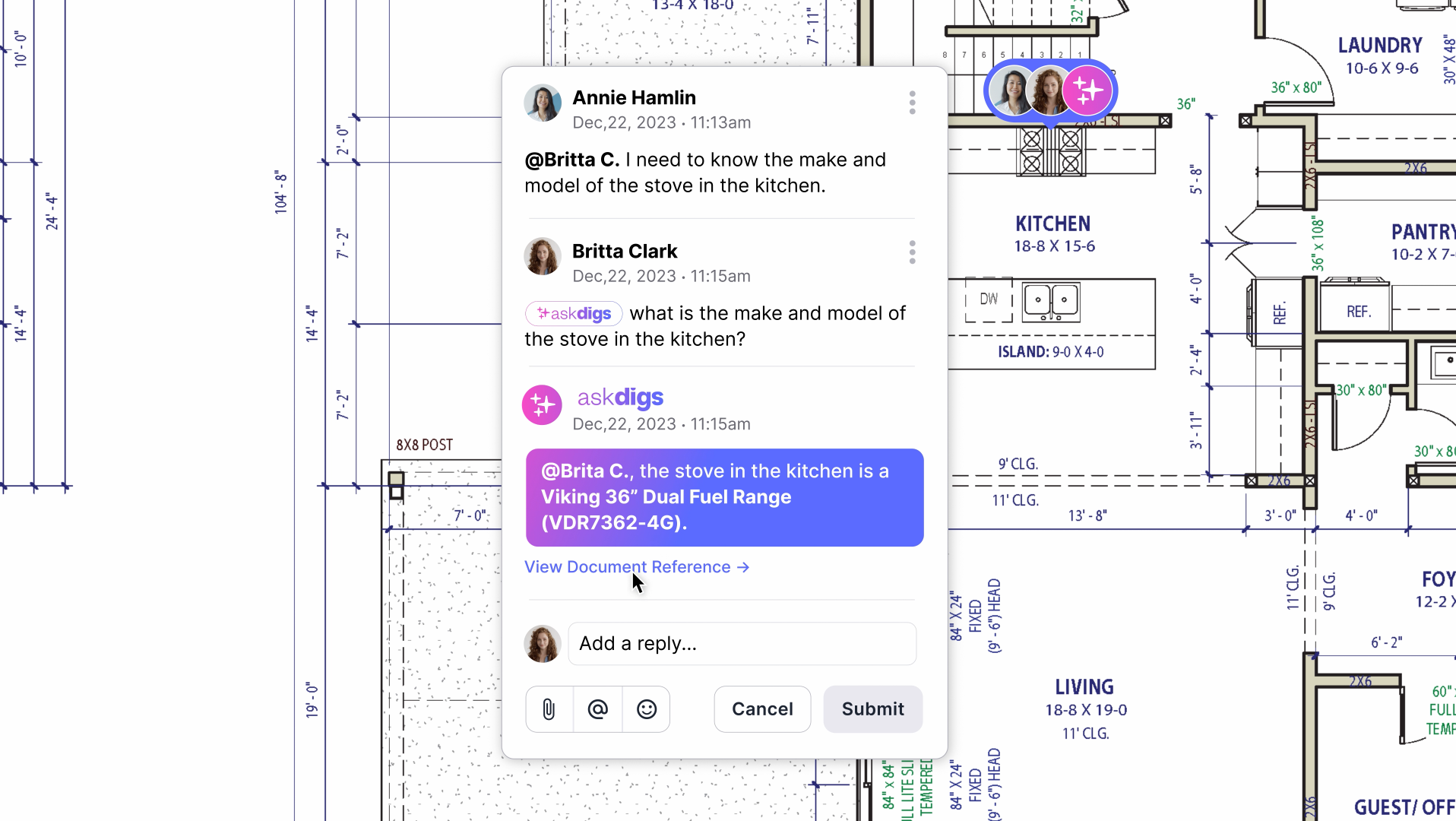AI is everywhere in construction conversations right now. Some say it will transform the industry overnight. Others say it’s all noise. The truth sits somewhere in the middle: AI is already solving real problems for builders, but not in the flashy, unrealistic ways often portrayed.

Here’s a grounded look at what’s actually working, what’s exaggerated, and where AI is truly headed for residential construction.
What’s Real: AI That’s Solving Actual Problems Today
1. Reducing Rework by Improving Data Accuracy
One of the biggest drivers of rework is incomplete, missing, or inconsistent information.
AI is helping builders catch mistakes earlier by flagging inconsistencies in plans and documents, organizing data so teams always work from the right version, and highlighting missing details before they turn into expensive fixes. Builders are already using these tools to reduce errors and keep jobs on track.

2. Automating Low-Value, Manual Tasks
Builders are drowning in documentation, file sorting, and information requests. AI can now automate a surprising amount of this work by categorizing and naming documents, extracting specs, SKUs, and warranty information, preparing homeowner documentation, and organizing selections, finishes, and details from PDFs. Every hour saved on paperwork is time redirected back to building.
3. Improving Collaboration Across Teams and Trades
AI-powered platforms are creating more connected jobsite communication by surfacing the right information instantly, reducing back-and-forth, making every document searchable, and bringing consistency to how information is shared. This leads to fewer phone calls, fewer delays, and fewer “I never saw that” moments.
.png)
What’s Hype: AI That’s Not Ready (Yet)
1. Fully Autonomous Job Sites
Robots building homes start-to-finish may make headlines, but the complexity, variables, and skilled decision-making on-site make full automation unrealistic in the near term.
2. AI That Replaces Superintendents or PMs
AI can enhance roles, but it can’t replace the judgment, sequencing knowledge, trade relationships, or field experience required to run a project. If anything, AI will make these roles more valuable by freeing them from administrative overload.
3. “Push a Button and Get a Perfect Build Plan”
AI is getting better at analyzing plans, but it still doesn’t understand context the way humans do. The industry is far from a one-click, fully accurate build plan or schedule.
What’s Next: Where AI Will Actually Take Construction

1. Predicting Problems Before They Happen
AI is already helping builders catch issues earlier by identifying schedule conflicts, material mismatches, and gaps in documentation. The capabilities now being built — and actively launching as you read this — are pushing the industry from early detection to true anticipation, where AI can forecast risks before they become bottlenecks. As models learn from more project data, builders will gain clearer visibility into potential delays, change-order triggers, and coordination issues long before they reach the jobsite
1. From Reactive to Proactive Building
AI is already helping builders spot issues earlier by identifying schedule conflicts, material mismatches, and gaps in documentation. What’s next is moving from early detection to true anticipation, where AI can forecast risks before they become bottlenecks. As models learn from more project data, builders will gain clearer visibility into potential delays, change-order triggers, and coordination issues long before they hit the jobsite.
2. Smarter Homeowner Experiences
Homeowners will expect instant access to maintenance reminders, digital records, product data, and home-specific guides. The industry is moving toward a complete digital lifecycle for the home, supporting both builders and homeowners long after move-in.
3. Seamless Data Flow Across the Build Process
Today, data is scattered across folders, inboxes, PDFs, and local drives. AI will bridge those silos so information flows smoothly from architect to builder to trades to homeowner with far fewer manual steps.
How Builders Are Using AI Today
Modern AI isn’t just organizing information; it’s enhancing how builders visualize, plan, and collaborate. Platforms like Digs use AI to turn 2D floor plans into interactive 3D models, making it easier for teams and clients to understand layouts before construction begins. They also support more accurate estimating with snap-to-point measurements, streamline coordination with digital plan markups and real-time collaboration, and automatically organize project documents by extracting key details from files. These aren’t futuristic promises; they’re practical tools that help teams work faster, more accurately, and with greater clarity.

